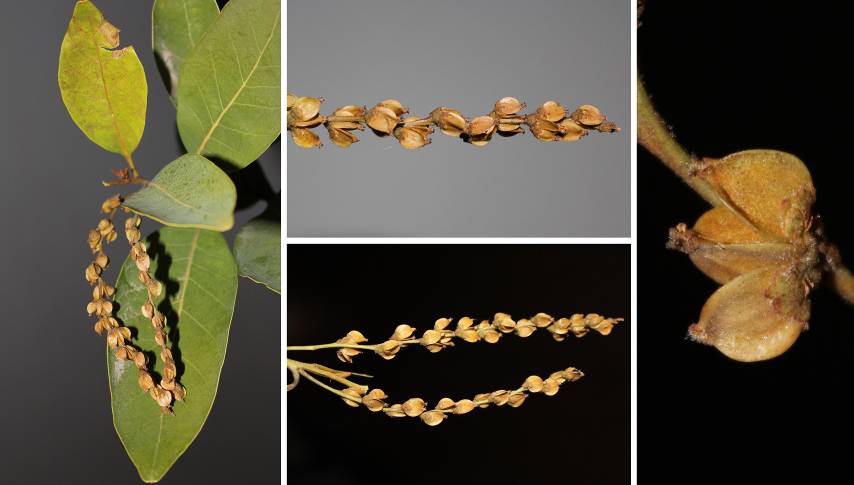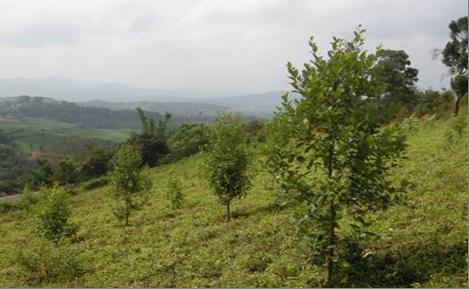There are three species in Trigonobalanus of Fagaceae: T. verticillata is distributed in Hainan, China (China's new record) and several islands in Malaysia and Indonesia; T. doichangensis, in northern Thailand, south and southwest of Yunnan Province (new record in China in 1981); T. excels, in Colombia of South America close to the equator. Thus the distribution of this genus is northern and southern hemispheres disjunctive. Related with the deforestation for farmland, limited distribution territory, scattered individuals and endangered status of T. doichangensis, and thus it has been proposed as second-ranked wild plant for national protection of China.
Since 2001, based on the overall investigation of T. doichangensis’ distribution in China, a research group led by professor SUN Weibang has carried out a systematic study on these aspects of this species: population/community ecology; reproductive biology/ecology; population genetic variation and genetic structure; relation between spatial topological structure and compositions of leaf epidermal wax with its environment adaptability; seed biology characteristics and seed germination; cytological geography; conservation status assessment; germplasm (seeds and cultures) in-vitro conservation technology; Biological characteristics of domestication. The factors of endangerment, germplasm resources conservation and basic biological and technical problems of introduction and domestication have all greatly explored, and the basic theories and technical guidance for long-term and effective conservation, and sustainable utilization of T. doichangensis resources have been achieved.This research was supported by the Important Directional Item of KIP (Knowledge Innovation Project) by CAS and Botanic Gardens Conservation International (BGCI).
So far, 10 scientific papers were published in journals such as Biodiversity and Conservation, Plant Systematics and Evolution, Botanical Journal of the Linnean Society, Australian Journal of Botany, New Forests and Euphytica and other international publications, and China’s core scientific journals of Acta Ecologia Sinica, Acta Botanica Yunnanica, Wuhan Botanical Research. Two authorized invention patent were achieved, and more than 2,000 saplings of T. doichangensis propagated from the 5 extant populations have been well ex-situ conserved in Kunming Botanical Garden, Qujing Normal Collage, Affiliated High School of Yunnan Normal University etc. Some individuals of T. doichangensis conserved in Kunming Botanical Garden have fruited since 2010. Meanwhile, some 247 different aged saplings from the 5 populations of T.doichangensis have been reintroduced to its natural habitat at Banpo of Donghui Village, Langcang County in Yunnan Province. The reintroduced saplings have been maintained in good condition, and the data collected from the regular dynamic monitoring has being well documented.

Seeds of T. doichangensis from Kunming Botanical Garden (image by KIB)

T. doichangensis returned field (image by KIB)




